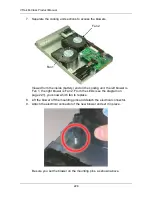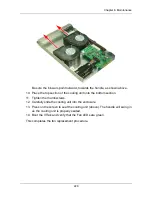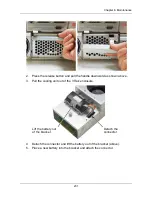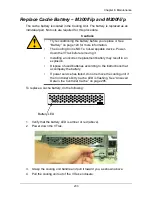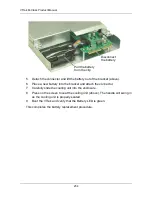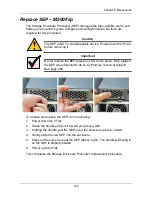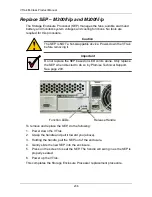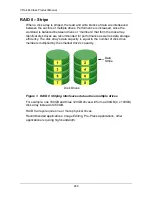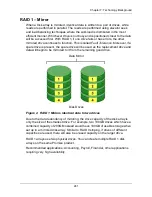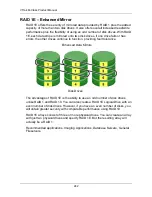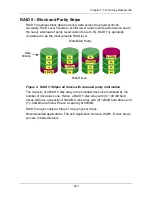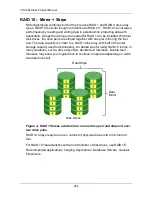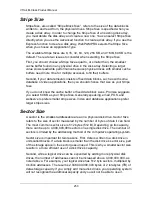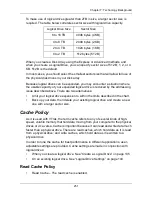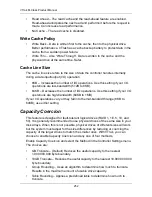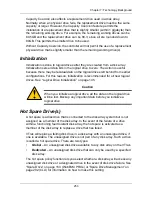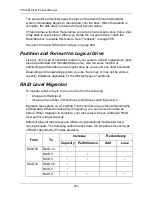
239
Chapter 7: Technology Background
•
Introduction to RAID (below)
•
Choosing a RAID Level (page 247)
•
Stripe Size (page 250)
•
Sector Size (page 250)
•
Cache Policy (page 251)
•
Capacity Coercion (page 252)
•
Initialization (page 253)
•
Hot Spare Drive(s) (page 253)
•
Partition and Format the Logical Drive (page 254)
•
RAID Level Migration (page 254)
•
Media Patrol (page 257)
•
Predictive Data Migration (PDM) (page 257)
•
Transition (page 258)
Introduction to RAID
RAID (Redundant Array of Independent Disks) allows multiple hard drives to be
combined together in a disk array. Then all or a portion of the disk array is formed
into a logical drive. The operating system sees the logical drive as a single
storage device, and treats it as such. The RAID software and/or controller handle
all of the individual drives on its own. The benefits of a RAID can include:
•
Higher data transfer rates for increased server performance
•
Increased overall storage capacity for a single drive designation (such as, C,
D, E, etc.)
•
Data redundancy/fault tolerance for ensuring continuous system operation in
the event of a hard drive failure
Different types of disk arrays use different organizational models and have
varying benefits. Also see Choosing RAID Level on page 247. The following
outline breaks down the properties for each type of RAID disk array:
Summary of Contents for VTrack M-Class M200f
Page 18: ...VTrak M Class Product Manual 10 ...
Page 36: ...VTrak M Class Product Manual 28 ...
Page 61: ...Chapter 3 Setup 53 13 When you have finished specifying logical drives click the Next button ...
Page 64: ...VTrak M Class Product Manual 56 ...
Page 164: ...VTrak M Class Product Manual 156 ...
Page 246: ...VTrak M Class Product Manual 238 ...
Page 304: ...VTrak M Class Product Manual 296 ...




